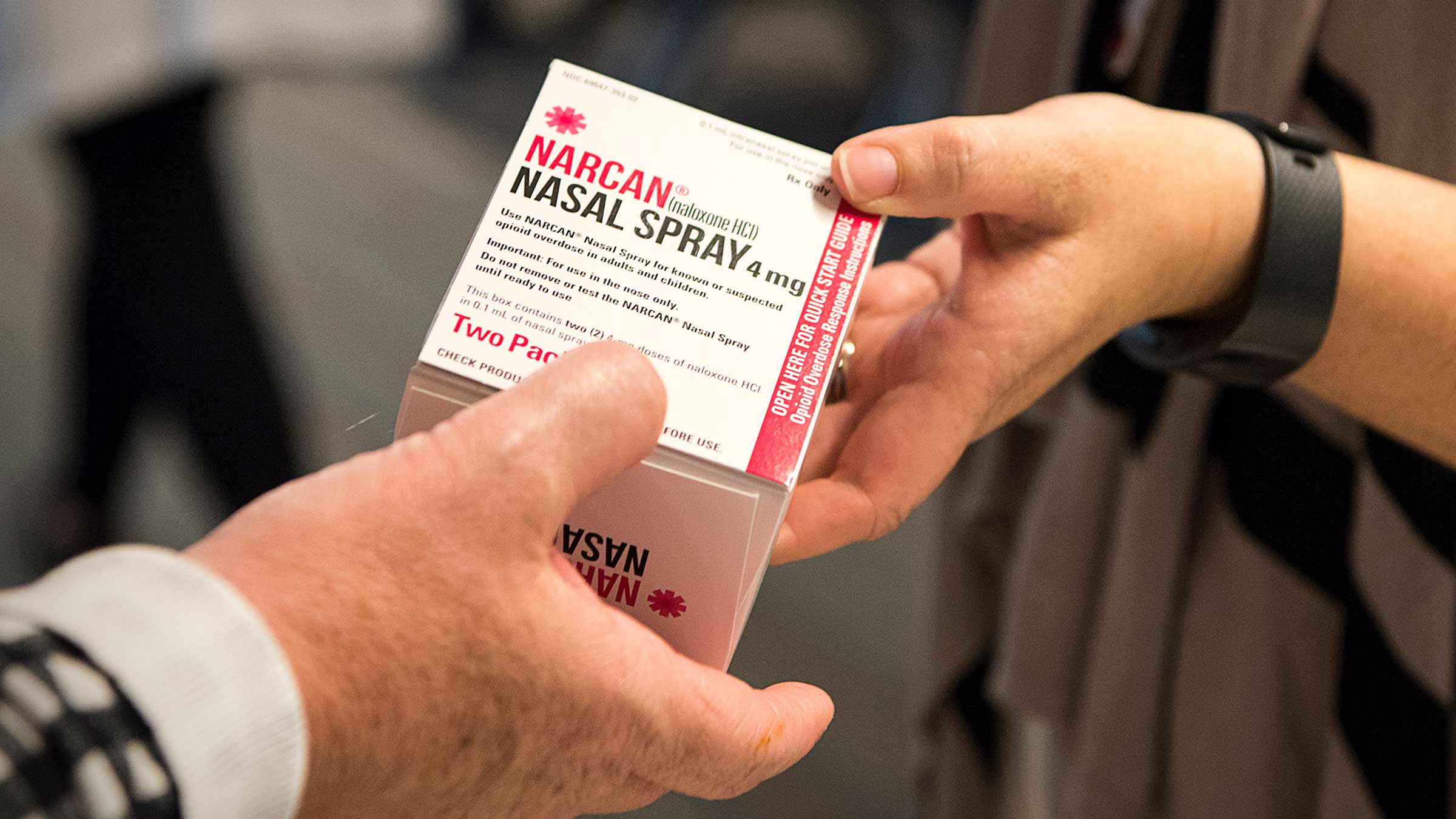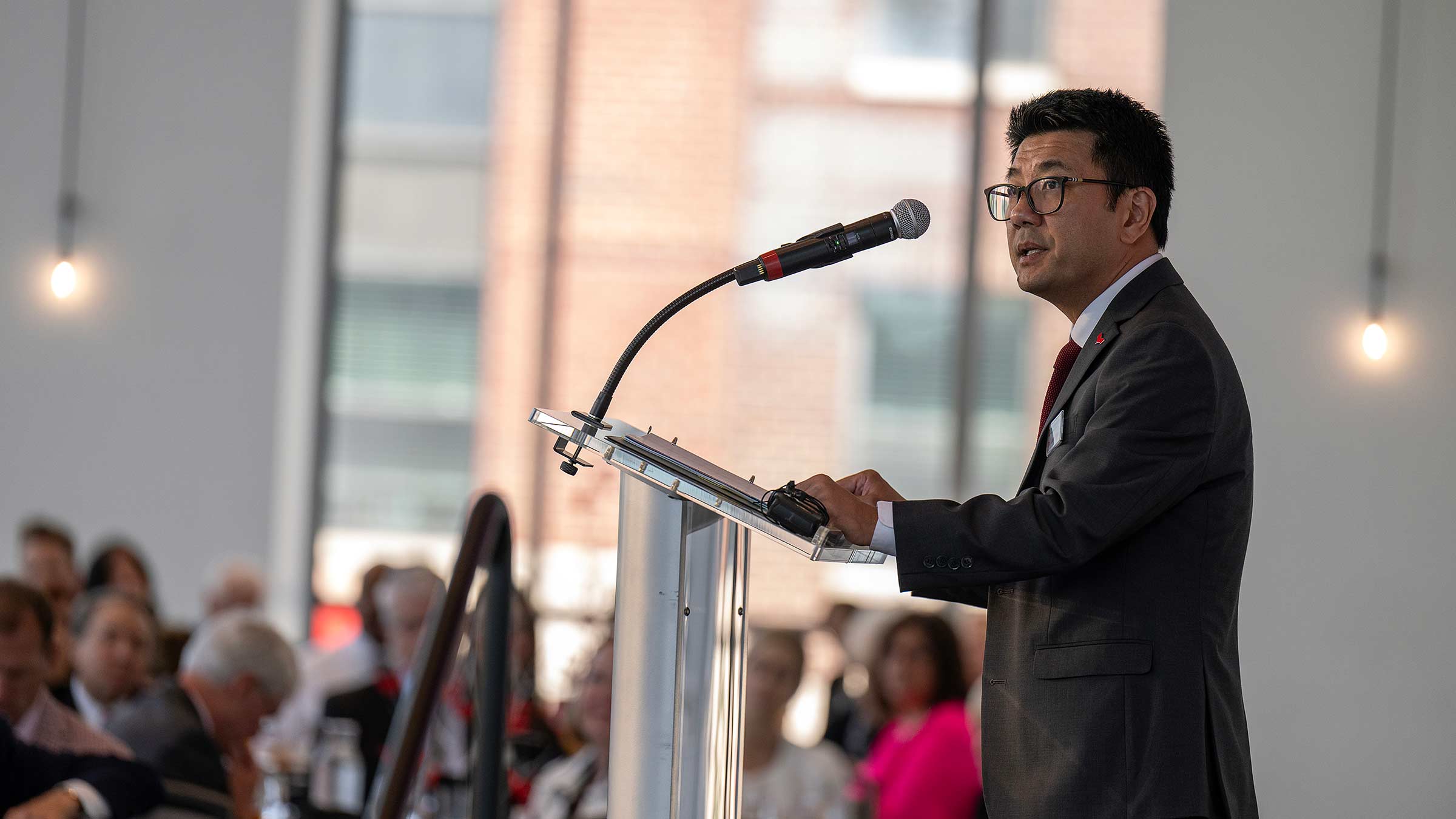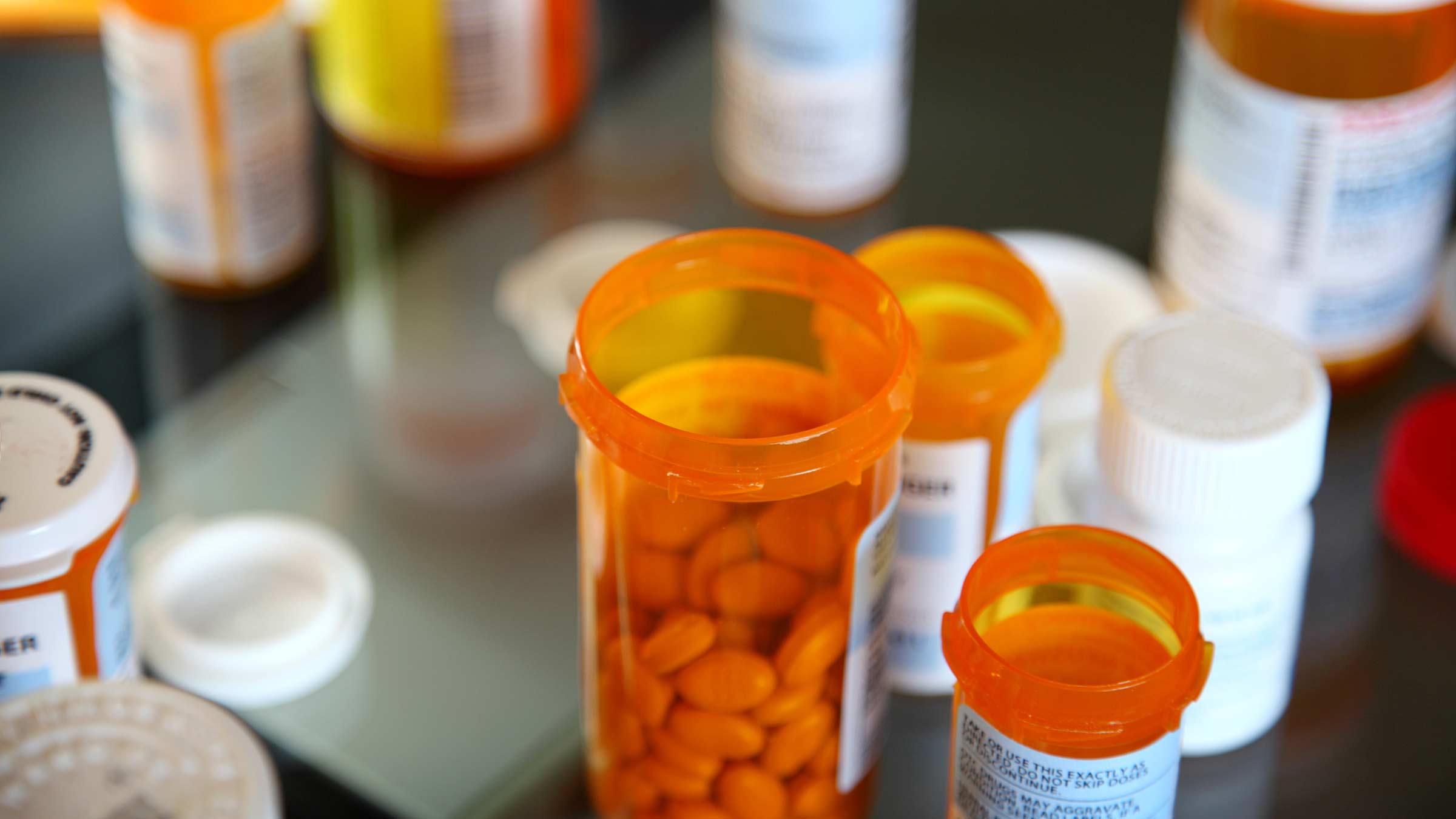
When given in time, naloxone can save a life.
The nasal-spray drug, also known by the brand name Narcan, can temporarily reverse the effects of an opioid overdose, blocking opioids’ effects on the brain and restoring breathing. It’s harmless if given to someone who isn’t experiencing an overdose, and it has no potential for abuse.
It’s become an important tool in fighting an epidemic of opioid addiction, which has hit Ohio especially hard in the past decade. And as overdoses tend to become more frequent in times of isolation and economic uncertainty, we’ve seen even more deaths from opioid overdoses during the COVID-19 pandemic.
But some of this tragedy can be avoided when naloxone is available, allowing someone who is overdosing to receive this lifesaving intervention and continue on their journey toward treatment and recovery.
Who should carry naloxone/Narcan
Anyone can carry naloxone, and you don’t need a prescription to obtain it.
People who should especially consider carrying naloxone include:
- people who are currently taking high doses of prescription opioids for pain or are taking opioids along with alcohol and/or sedatives
- people with a history of overdose or of opioid use disorder
- people with active opioid use disorder
- people who use other drugs, such as cocaine and methamphetamines, which can be contaminated with the powerful opioid fentanyl
- anyone who knows or is commonly around anyone who falls into the above categories
People living and/or working in areas that see high rates of opioid overdose also should carry naloxone with them in the event that they’re able to save the life of someone in their neighborhood.
If you have opioid prescriptions in your home, you should also keep naloxone, in case someone — such as a child — accidentally ingests them.
Important note: Fentanyl is now showing up in other drugs, such as cocaine, methamphetamine, pills and other illicit drugs — there have even been some reports of fentanyl found in marijuana. It’s important for anyone who uses these drugs to have naloxone on hand, to use a small amount at a time, and to never use alone. It’s also a good idea to test drugs using fentanyl test strips, which can be purchased online or obtained from some harm reduction programs. Street drugs are becoming increasingly more lethal because of the amount of fentanyl that may have been added.
Where to get naloxone/Narcan
Narcan/naloxone is available to the public at many retail pharmacies, including Ohio State outpatient pharmacies. In Ohio, locations that are part of the Ohio Department of Health’s Project DAWN (Deaths Avoided With Naloxone) are reliable sites to find a naloxone kit and training on how to use it.
In March 2023, the United State Food & Drug Administration (FDA) approved 4 milligram Narcan spray for nonprescription use, paving the way for it to be sold more widely as an over-the-counter (OTC) drug in convenience stores, grocery stores, gas stations and online.
Before this approval to sell Narcan over the counter, pharmacists had been granted a standing prescription so that they could dispense Narcan to whoever requested it — but the pharmacists weren't obligated to do this.
The Ohio State University Wexner Medical Center and other health organizations often distribute naloxone kits at community events, too, with information on how to use it.
Since 2015, Ohio State Emergency Departments have been distributing naloxone to those at risk of overdose and their family and friends. Beginning in 2018, the Ohio State College of Public Health collaborated with the Ohio State Wexner Medical Center, Equitas Health and other university groups to hold free sessions to distribute naloxone kits to the public and teach participants how to administer it safely.
Free naloxone kits are now available to patients at each of Ohio State’s seven hospitals, including through Talbot Hall Addiction Medicine and at select outpatient clinics that see a high volume of patients with substance use disorders. Many of the addiction medicine sites that offer naloxone kits can also provide fentanyl test strips that can test for the presence of fentanyl in other drugs, such as fake pills, methamphetamines and cocaine.
Increasingly, "NaloxBoxes" are being installed in public areas for use in an emergency on-site similar to automated external defibrillators (AEDs). These boxes contain two doses of nasal naloxone and instructions for use, and have been added to 28 locations across the campuses of The Ohio State University and the Ohio State Wexner Medical Center, through a collaboration with the Alcohol, Drug and Mental Health Board of Franklin County (ADAMH). The program began in late 2021 in response to rising fentanyl overdose deaths, many of which occur in public spaces, and ADAMH plans to have about 250 NaloxBox rescue kits installed throughout the community by the end of 2023.
How do I use naloxone/Narcan?
The video below explains symptoms of an opioid overdose and how to administer naloxone to someone you think is experiencing an overdose. Symptoms include:
- breathing that is slow, shallow, erratic or has stopped
- a pulse that is slow, erratic or has stopped
- a pale or clammy face
- blue-, purple- or black-tinted fingernails and lips
- blue/purple or gray skin
- choking or gurgling sounds
- vomiting
- loss of consciousness
- unresponsiveness
If you see someone you suspect is overdosing, administer one dose of naloxone/Narcan and call 911. The naloxone won’t hurt them even if they aren’t overdosing. If the person still isn't breathing after a few minutes, you can administer a second dose.
What else you can do to help reduce overdose deaths
Besides carrying naloxone and learning how to use it in an emergency, you can help make drugs less available for abuse by properly disposing of medications when you’re done using them. Community drug take-back events are a great opportunity to clear out the medicine cabinet, but there are other safe disposal mechanisms both at home and at year-round receptacle locations.
Encourage people not to use drugs alone — if someone overdoses, someone else needs to be there to administer naloxone and/or call for help. Individuals who are alone can also call Never Use Alone.
It’s also helpful in the long run to celebrate and support people who are in recovery. Particularly during the pandemic, we’ve seen high rates of relapse, likely due to social and emotional stressors. Extra support can help.
The language surrounding addiction, too, can help create an environment that supports people seeking treatment for addiction. Use person-first language when talking about people with addiction — research has found that fear of stigma is an important reason why many people delay or avoid seeking treatment. Supportive language is as simple as describing someone as a “person with substance use disorder” rather than an “addict” or “alcoholic.”






